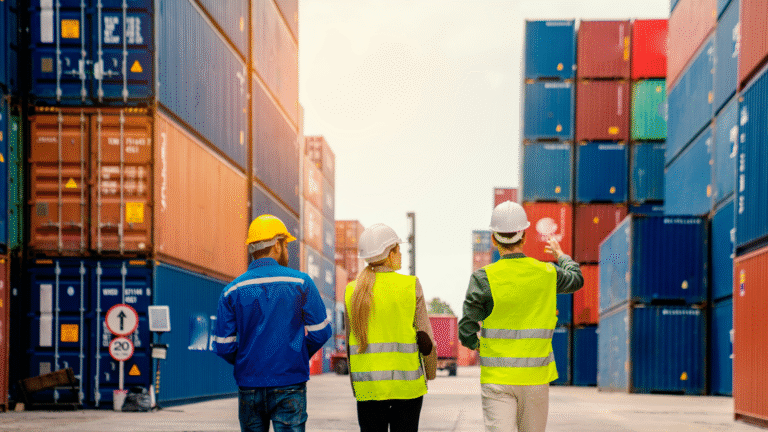Electric vehicles (EVs) are transforming the future of transportation, but the journey from raw materials to showroom floors is more complex than most realise. In Australia, where EV adoption is accelerating, understanding the intricacies of the EV supply chain is critical for both consumers and policymakers. From lithium mining to battery production and vehicle assembly, every stage presents its own challenges—and opportunities for innovation.
Table of Contents
- EV Supply Chain Overview
- Major Challenges in the EV Supply Chain
- Solutions and Strategies for a Resilient Supply Chain
- FAQs
- Conclusion
- Meta Description
EV Supply Chain Overview
Key Components of the EV Supply Chain
The EV supply chain encompasses several stages:
- Raw material extraction: Includes mining lithium, cobalt, nickel, and rare earth elements.
- Battery manufacturing: Cells and packs are produced from processed raw materials.
- Vehicle manufacturing: EVs are assembled using electric drivetrains and integrated software.
- Logistics and distribution: Completed vehicles and parts are transported to markets worldwide.
- End-of-life and recycling: Focuses on battery reuse, materials recovery, and sustainable disposal.
Australia’s Role in the Global EV Ecosystem
Australia is rich in key minerals essential for EV batteries:
- World’s leading producer of lithium (53% of global production in 2022).
- Significant reserves of nickel and cobalt.
- Emerging capabilities in battery technology and sustainable mining practices.
However, most of the value-added processing still occurs offshore—primarily in China, South Korea, and Japan.
Major Challenges in the EV Supply Chain
Raw Material Sourcing
- Volatility in mineral prices: Lithium prices have fluctuated wildly due to demand surges.
- Ethical concerns: Cobalt mining in countries like the DRC raises human rights issues.
- Environmental impact: Open-pit mining can damage local ecosystems.
Australia must balance resource extraction with sustainability and ethical mining practices.
Battery Manufacturing Bottlenecks
- Limited local manufacturing: Australia lacks large-scale gigafactories.
- Dependence on imports: Battery cells are primarily imported from Asia.
- Skilled labour shortages: Engineering talent and specialised workforce are in short supply.
Logistical and Transport Issues
- Geographical remoteness: Increases shipping time and costs for both import and export.
- Port congestion and customs delays: Particularly affecting EV imports from Asia.
- Lack of local infrastructure: Inadequate freight rail and EV component logistics hubs.
Supply Chain Disruptions Due to Global Events
- COVID-19 pandemic: Caused factory shutdowns and port closures.
- Geopolitical tensions: Trade disputes between major EV players (e.g., China and the US) can impact supply availability.
- Climate events: Bushfires and floods in Australia have also affected mining and transportation routes.
Solutions and Strategies for a Resilient Supply Chain
Localising Battery Production
- Government incentives: Grants for domestic battery facilities (e.g., Australia’s Critical Minerals Strategy 2022).
- Public-private partnerships: Companies like Pilbara Minerals and Tesla collaborating to establish local capacity.
Investing in Circular Economies
- Battery recycling initiatives: Companies like Envirostream are leading local recycling programs.
- Second-life batteries: Reusing EV batteries in home energy storage systems.
- Urban mining: Recovering metals from electronic waste.
Policy Support and Industry Collaboration
- Federal and state policies: Investment in EV infrastructure and zero-emissions targets.
- EV Council of Australia: Advocates for a stronger domestic EV industry.
- Free trade agreements: Boost access to international markets and materials.
Technological Innovations
- Solid-state batteries: Offer longer life cycles and faster charging.
- Blockchain for supply transparency: Ensures traceability of materials.
- AI-driven demand forecasting: Optimises supply chain efficiency.
FAQs
1. Why is the EV supply chain so complex?
The EV supply chain involves multiple industries—mining, chemicals, manufacturing, and logistics—spanning across several countries.
2. What are Australia’s advantages in the EV supply chain?
Abundant natural resources, political stability, and growing R&D sectors make Australia a valuable player in the global EV ecosystem.
3. Can Australia build its own EVs?
While most EVs are imported, local startups and research centres are exploring domestic EV design and production capabilities.
4. How do supply chain issues affect EV prices?
Material shortages and manufacturing delays increase production costs, which can drive up the retail price of EVs.
5. What is being done to recycle EV batteries in Australia?
Programs like those by Envirostream and Lithium Australia focus on recovering valuable materials and reducing landfill waste.
Conclusion
As Australia accelerates its transition to electric mobility, building a resilient and ethical EV supply chain is more important than ever. From localising battery production to leveraging policy support and innovative technology, a sustainable supply chain will not only secure Australia’s position in the global market but also drive economic and environmental benefits.
Are you an EV enthusiast or industry stakeholder?
Share your thoughts or join the conversation in the comments below. Stay informed by subscribing to our newsletter for updates on Australia’s electric future.
Meta Description
Explore the EV supply chain in Australia—challenges, solutions, and how the nation is shaping a sustainable electric future.
